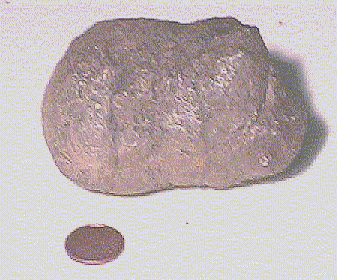 Extrusive external morphology Extrusive external morphology Internal structure is ordered (ex. Spiral) Internal structure is ordered (ex. Spiral) Longitudinal/spiral striations Longitudinal/spiral striations Morphology similar to animal gut Morphology similar to animal gut Morphology reflects viscosity seen in modern feces Morphology reflects viscosity seen in modern feces Flattening of ventral side Flattening of ventral side Inclusions of organic matter Inclusions of organic matter Composition of calcium phosphate Composition of calcium phosphate Very fine-grained matrix Very fine-grained matrix Vertical relief in shale which distorts laminae Vertical relief in shale which distorts laminae Preserved in sedimentary rock Preserved in sedimentary rock
|
 NMC 35799 * |
One of the major factors influencing preservation is fecal decomposition. Fecal material is a haven for small organisms. In carnivorous and onmivorous feces, breakdown is common by bacteria and fungal activity. Breakdown in herbivorous scat is taken care of mostly by invertebrate scavengers and a little microbial activity.
